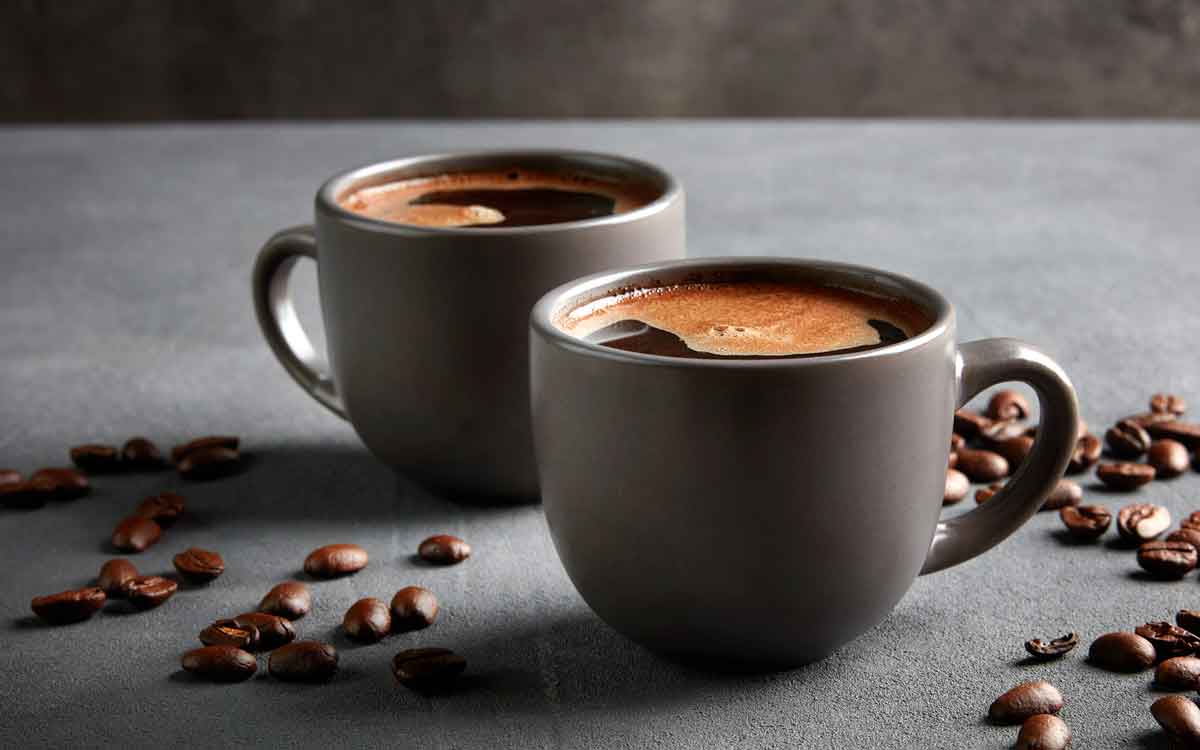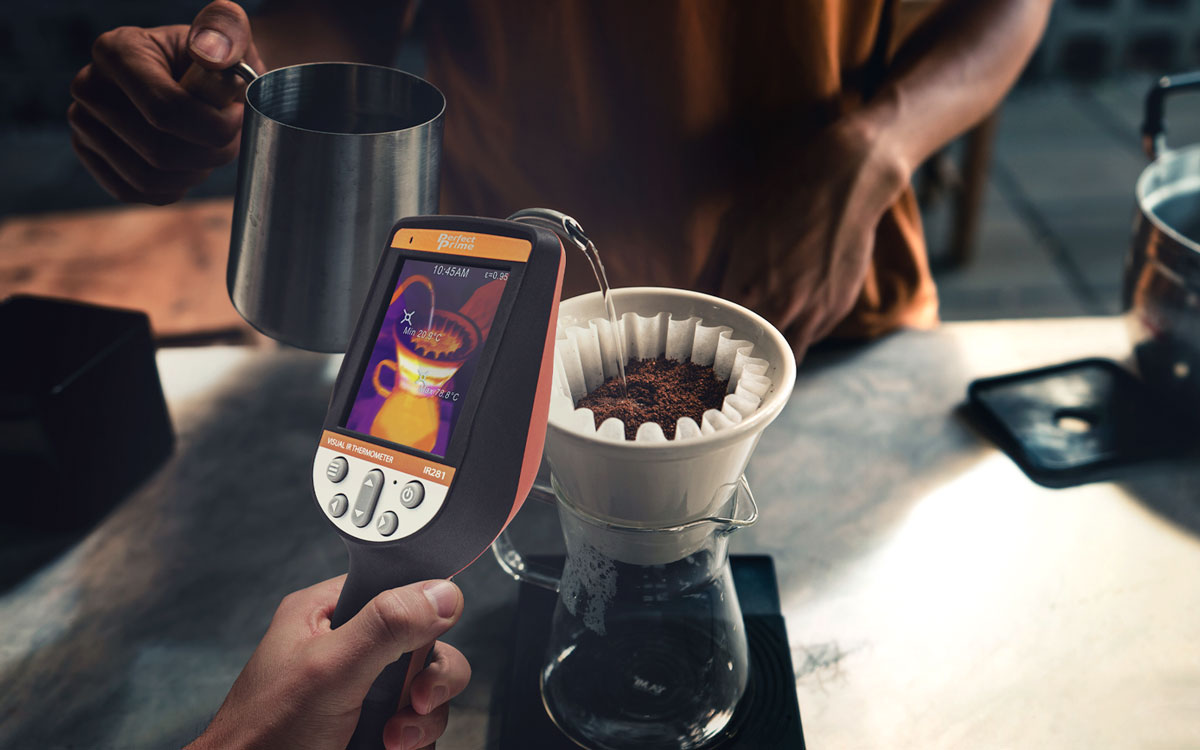A handy thermal camera can be just the secret weapon you need when you’re longing for a morning cup of joe that’s brewed perfectly. Something that would give you the edge when gunning for filter coffee right at your home.
In hindsight, espresso coffee has its merits: those lattes and flat whites can be so deliciously intense. And yet, the cost of espresso machines can be generally counterintuitive. What’s more, not only does filter coffee result in brighter, lighter flavors for your cup of joe but it also allows you to enjoy coffee just about anywhere you want.
In this post, we’ll give you a lowdown on why using a thermal camera when brewing filter coffee is best. Specifically, we’ll show you 3 secrets of how that perfect brew is easily within your reach with an infrared device at your beck and call. Read on.

Why Temperature Matters in Brewing Your Cup of Joe
There’s no mistaking about it. Coffee is the world’s most consumed liquid on the planet, second to tea (and water itself). And while there are many ways to enjoy coffee, only two methods stand out as most useful for practical purposes: the espresso and filter coffee methods.
Think of espresso like a runaway train: giving you coffee in no time just like that. Remember those big, burly coffee machines baristas of Starbucks put their hand into while you wait? But if you want to experience coffee in all its subtle nuances (and wherever you are), then, filter coffee is the way to go.
It’s tempting to think that any hot water would do when prepping your fave cup of joe. The truth of the matter is the exact temperature matters. And the reason is simple.
By definition, coffee bean extraction is the process of putting the flavors and substances from the coffee bean into your cup. Here’s how extraction affects your morning cup of joe.

As you can see, you need the right water temperature to enjoy filter coffee to the utmost. On the other side of the fence, there’s cold brew. But that’s a totally different way of making coffee as that takes a lot longer time to brew.
The National Coffee Association USA has spoken. Ideally, you should have between 195°F and 205°F water temperature for brewing a cup of joe. This is a bit below the boiling point of water which is 212°F.
When you brew drip coffee within this temperature range, you facilitate the perfect extraction of the coffee flavors. As a result, this shouldn’t give you a bitter taste common to higher temperatures.
Confused about how to make your perfect cup of joe happen? Don’t worry. This is where a handy thermal camera is your best friend.
3 Ways Thermal Camera Leads to a Perfect Brew
When brewing filter coffee, chances are you’d do it at home (or wherever you want it). As is usually the case, you’ll rely on common methods to measure water temperature. Here’s why putting your faith in a thermal camera is spot on.

1. Unequalled Precise Measurement of Water Temperature
You could reach for a thermometer when wanting to know the temperature of your steaming hot water while brewing. That’s instinct. Or call it a knee-jerk reaction.
But here’s what.
National Institutes of Health (NIH) identified that the margin for error for electronic temperatures is about 0.5 degrees. On the other hand, mercury thermometers (traditional method) can have a margin of error of about 0.6%. That may seem insignificant but a thermal camera can do a lot better.
IMPORTANT:
Thermal cameras can detect differences in temperature by as much as 0.2°C. Or even less.
Indeed, this is good news for you if you want your filtered cup of joe brewed perfectly.
Thermal cameras offer even better temperature measurements than spot thermometers using infrared technology. Spot thermometers are prone to operator use as they need to be positioned in a particular way to exact the right measurement. However, thermometer guns offer a convenient way to detect temperatures of a more specific area.
2. Unsurpassed Quick Reading Speed
You don’t want to waste time when measuring steaming hot water. Things could cool down or heat up in no time. Again, this is where a thermal camera works best.
IMPORTANT:
Thermal cameras can detect differences in temperature in under one second.
How does a thermal camera a.k.a. infrared camera do it? It’s simple really.
The device detects infrared radiation from an object, an energy that can travel as fast as the speed of light (300,000klm/sec). Small wonder such thermal technology is used to detect the birth of new stars from galaxies far away (or the death of one).
In contrast, a traditional thermometer can detect body temperature in about 30 to 60 seconds. A lot longer indeed.
Worse, you’ll have to keep the mercury thermometer warmed up for minutes in the armpit of a sick love one to know his/her fever temperature.
3. Unrivaled Safety for You
You may think brewing coffee is a safe exercise. But contrary to what you may have known, there are cases when serious harm was reported.
For one, coffee maker burn injuries have been filed in various courts all over America. As easy as these machines to operate, incidents when they explode and burn unsuspecting patrons has happened. The thing is when you’re dealing with extreme heat, you can get certainly get burnt, as per liability lawyers.
- Every year, over 1000+ coffee maker fire incidents happen on the planet
- In the United States, 60 fires are caused by coffee makers
- Older coffee makers are usually the culprit of coffee maker fires
This just goes to show the risks involved in brewing coffee.
But this is also where a thermal camera is at its best. And that’s because the device is:
- Non-contact
- Usable from a safe distance
- Super quick reading
With its ability to detect heat from a few feet, a thermal camera can get the water temperature in the blink of an eye. And ensure your filtered cup of joe stays as fresh and delicious as you want them to be.

